Bea Lines
by H.G. "Bea" Hyve
Reprinted from "Crown Jewels of the Wire", September 1992, page 15
JOHN MILEK
This time "Bea Lines" is going to interview a transplanted
Californian by the name of John Milek, who now lives in Drums, Pennsylvania. Mr.
Hyve and I have known John since he was a teenager. We met him around 1978 at
the Bakersfield show, and we have always been impressed with him, for he has
grown from a nice young boy into a nice young man.
John was first attracted to
insulators in the summer of 1972 during a family vacation to Sedona, Arizona. At
that time he was seven years old and lived with his parents in Tustin,
California. They were in an antique shop in Sedona, and while his mother was
looking for depression glass, John told his father that he wanted to collect
something also. Well, his dad found that "something"... a CD 106
Hemingray No.9, one in aqua and one clear, both with wood pins, for $2.00 each.
By the end of the vacation John had five insulators. He'd also picked up a
crossarm from his uncle and aunt, Ren and Rose Stewart, who have a ranch in
Cornville, Arizona. This crossarm had supported a barbed wire fence there on the
ranch.
A few years later John's father was talking to an elderly couple in an
antique shop in Newport Beach, California. John says, "They told him of a
friend of theirs who was selling off his collection. We went to the home of
Clifford Page in Garden Grove, California, and my interest was cemented then and
ever since. Seeing thousands of insulators and colors was something had never
experienced until that day. Mr. Page also had two telephone poles loaded with
crossarms and
insulators rising well above his single story home, and that was the beginning
of my insulator craze.
"Although my collection is a general one, I have
also concentrated on H.G ./Hemingray signals, CD 257 Mickey Mouses, and CD 102
Diamond ponies. I shall move on to other specialties upon nearly or fully
completing any of those listed, if that is possible in our hobby.
"I
collected just insulators until the mid-1980's, when my dearest friend, Eileen
Bannister, came home with a telephone sign. Needless to say, the race was on for
telephone signs. My downstairs living room is the 'Telephone Room' with
wall-to-wall signs, mostly old, with newer ones also displayed. But insulators
still come first."
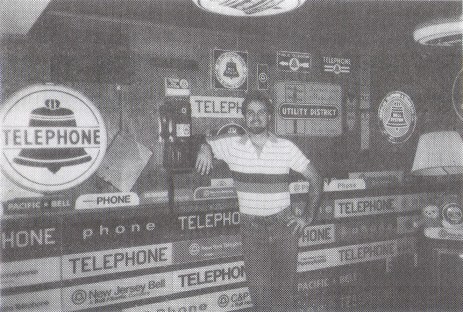
John and some of his signs and things in the "Telephone Room".
We'll get back to insulators in a moment, but first here are some statistics
on John. He was born May 5, 1965, in Santa Monica, California. After graduating
from high school, John went to work for Ricoh Copiers in Irvine, California. He
started in the receiving inspection department, and ten and a half months later was promoted to
assistant manufacturing engineer. John continues, "Not totally happy with
that, I went to work for Dimensional Control Corp. in Tustin, where my father
worked as district sales manager. I installed Sony Magnescale Digital Readout
Systems on metal-working machines, and daily went to companies like Rocketdyne
Division of Rockwell Int'l., where the engines for the space shuttle were made,
TRW, Hughes Aircraft, etc. Later I became a district sales manager of the San
Diego through Riverside territories, selling Sony and other precision measuring
equipment.
"During this time span I was also a musician. I had my own band
during high school and we played Polish polka music. I played the accordion and
later joined the now nationally-recognized Polka Family Band. In the spring of
1988 my job career did a 180 degree turnaround. The Polka Family Band, formerly
of California, went fulltime and moved to Pennsylvania. I now install Sony's on
the side." John owns his own home in Drums, in a beautiful quiet setting in
a forest, consisting of about .51 of an acre. His street name, Deer Run Road;
says it all. He has built a nice insulator room measuring 10' by 16', which is
separate from the house. He is having fun trying to fill all of the shelves with
insulators.
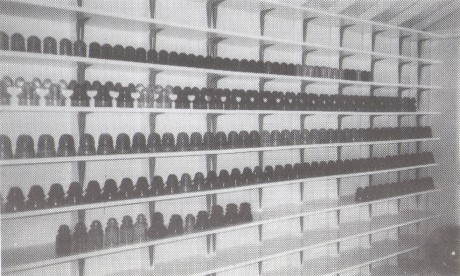
One wall of the insulator room with shelves anxious to be filled.
Note the
center row of H.G.CO. PETTICOAT beehives.
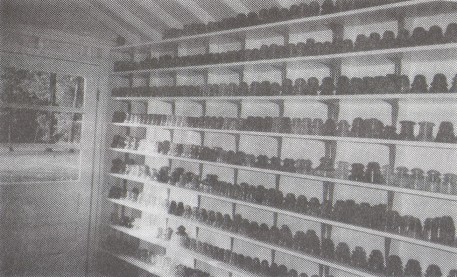
Another wall in the insulator room. Note the forest outside.
Over the past few months, John has generously sent us audio and video tapes
of the Polka Family Band, and it is beautiful, happy, exhilarating music. If
anyone even thought of becoming depressed, all they'd have to do is play just
one of their songs, and they couldn't avoid becoming cheerful! It is no wonder
that the Polka Family Band has been nominated for a Grammy twice; once in 1990
for their recording of "Fiddle Faddle", and again in 1991 for their
recording "We Are Family". At the present time, the band plays
approximately 150 times per year and has eight recordings (albums/cassettes/
CD's). They appeared in Carnegie Hall on June 11, 1992, and also have a cruise
scheduled to the Caribbean. Other awards include being voted Best Polka Band in
1988 and 1991 by the New England Disc Jockey Assoc., and in 1991 from the
International Polka Assoc. they received Best Album for "We Are
Family", Best Song for "We Are Family" lead cut, and Best
Instrumental Band. An impressive list, and well-deserved.
As promised, we're back to insulators. We'll let John relate this part of his
interview once again. "At the present time, my favorite insulator is the CD
145 H. G. CO. PETTICOAT beehive in sapphire blue that I purchased at the 1991
national in Cedar Rapids, from Mr. Mel Saunders of Clinton, Iowa. He came to the
national with it in his pocket, and inquired as to who or where was H. G. 'Bea'
Hyve. To make a long story short, through the efforts of Clarice, and especially
Ray Klingensmith, a trade was made, and I went home with the sapphire
beehive." [Take it from me, folks. It is the loveliest insulator in our
hobby...true sapphire blue and gem-mint.]
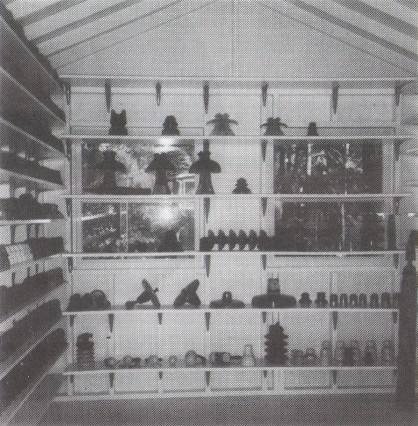
One end of the room, showing some nice porcelain and power
pieces, and
another view of the forest through the windows.
John states that his main "want" is a complete color scope of H. G.
CO. PETTICOAT beehives including each slight variation in which they are available. That's a pretty tall order, but maybe some of you
can help John fulfill that dream. At the present time he has 914 insulators, of
which no two are alike. He has 49 H. G. CO. PETTICOAT beehives. As for awards,
John says, "I was awarded second place for a display at the 1980 Sacramento
national, where my good friend, Mike Funderburk, took first prize; but that's
ok. His 'Carousel of Colors' display was better than my 'ABC's of Insulators."
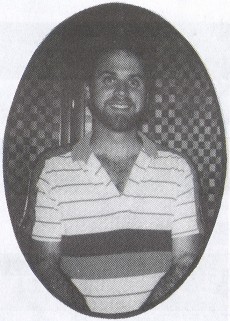
Those of us who know and love John Milek realize that Pennsylvania's gain is
definitely Califomia's loss. But he's still a part of our great hobby, and we
still get to see him and talk with him at some of the shows. Mr. Hyve and I will
always be grateful to him for the hard work he did for us, unloading our
truckful of junk at the national in Cedar Rapids. But the best part of all was
getting to see John again. He's a perfect example of the clean-cut, decent,
enthusiastic young people we are fortunate to have in our hobby. John is rather
quiet, and keeps a low profile; but if you see him at a show, go up and talk
with him. You'll be glad you did.
|
